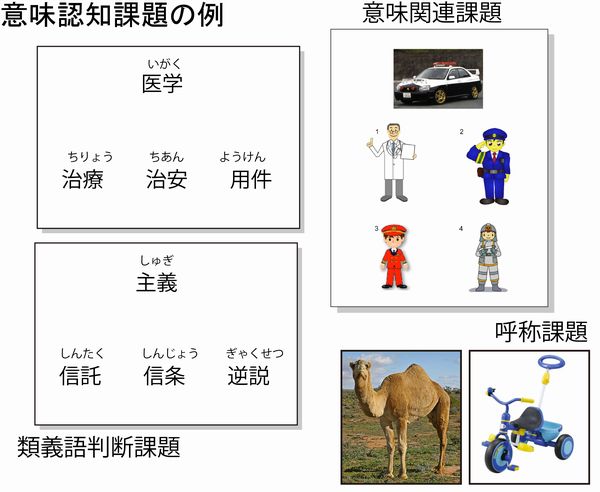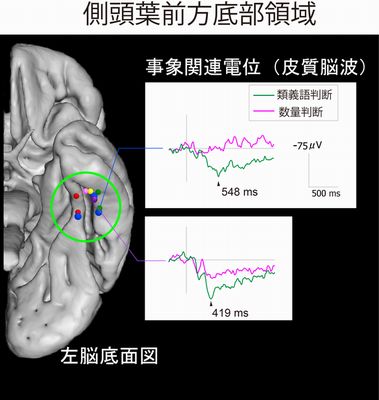Neural basis of semantic cognition/language comprehension in human
Project Gist
Unveiling the neural basis of semantic cognition in human
Keywords
semantic processing, language, ventral language pathway, higher cognitive functions, reorganization
Background, Purpose, and Project Achievements
While the classical dorsal language pathway links Broca’s and Wernicke’s area via the arcuate fasciculus and deals with the sound-to-articulation processing, the ventral language pathway has been recently highlighted with regards to language comprehension. However, the details of its anatomy, connectivity and functions remain elusive. In collaboration with the University of Manchester group, we applied multidisciplinary approach (neuroimaging, neuropsychology&invasive neurophysiology) to patients who undergo presurgical evaluation of epilepsy/tumor surgery, and demonstrated that the anterior and ventral part of the left temporal lobe plays a crucial role in semantic cognition/language comprehension.
Future Prospects
We would like to elucidate the dynamic reorganization, namely brain plasticity, of the language comprehension network in the patients with the impairment of the ventral language pathway by surgery, injury, infarction or dementia. The outcome is clinically useful for establishing speech therapy/rehabilitation focusing on the language comprehension.
Figures


Principal Investigator
Principal Investigator

・MATSUMOTO Riki
・Graduate School of Medicine
・Clinical neurology and system neuroscience are the two sides of the same coin. As a physician-scientist who is interested in bridging the two, I deeply engage in clinical care, education and research to solve clinically oriented questions.
・http://epilepsy.med.kyoto-u.ac.jp
・http://scholar.google.com/citations?hl=en&user=8QUXx2UAAAAJ
・http://www.scopus.com/authid/detail.url?authorId=7201655464
